Advanced Accounting 12th Edition By Hoyle Schaefer And Doupnik – Test Bank
CHAPTER 11
WORLDWIDE ACCOUNTING DIVERSITY
AND INTERNATIONAL STANDARDS
Chapter Outline
I. Accounting and financial reporting rules differ across countries. There are a variety of factors influencing a country’s accounting system.
A. Legal system—primarily relates to how accounting principles are established; code law countries generally having legislated accounting principles and common law countries having principles established by non-legislative means.
B. Taxation—financial statements serve as the basis for taxation in many countries. In those countries with a close linkage between accounting and taxation, accounting practice tends to be more conservative so as to reduce the amount of income subject to taxation.
C. Financing system—where shareholders are a major provider of financing, the demand for information made available outside the company becomes greater. In those countries in which family members, banks, and the government are the major providers of business finance, there is less demand for public accountability and information disclosure.
D. Inflation—historically, caused some countries, especially in Latin America, to develop accounting principles in which traditional historical cost accounting is abandoned in favor of inflation adjusted figures. As inflation has been brought under control in most countries, this factor is no longer of significant influence.
E. Political and economic ties—can explain the usage of a British style of accounting throughout most of the former British Empire. They also help to explain similarities between the U.S. and Canada, and increasingly, the U.S. and Mexico.
F. Culture—affects a country’s accounting system in two ways: (1) through its influence on a country’s institutions, such as its legal system and system of financing, and (2) through its influence on the accounting values shared by members of the accounting sub-culture.
II. Nobes developed a general model of the reasons for international differences in financial reporting that has only two explanatory factors: (1) national culture, including institutional structures, and (2) the nature of a country’s financing system.
A. A self-sufficient Type I culture will have a strong equity-outsider financing system which results in a Class A accounting system oriented toward providing information for outside shareholders.
B. A self-sufficient Type II culture will have a weak equity-outsider financing system which results in a Class B accounting system oriented toward protecting creditors and providing a basis for taxation.
C. Countries dominated by a country with a Type I culture will use a Class A accounting system even though they do not have strong equity-outsider financing systems.
D. Companies with strong equity-outsider financing located in countries with a Class B accounting system will voluntarily attempt to use a Class A accounting system to compete in international capital markets.
III. Differences in accounting across countries cause several problems.
A. Consolidating foreign subsidiaries requires that the financial statements prepared in accordance with foreign GAAP must be converted into the parent company’s GAAP.
B. Companies interested in obtaining capital in foreign countries often are required to provide financial statements prepared in accordance with accounting rules in that country, which are likely to differ from rules in the home country.
C. Investors interested in investing in foreign companies may have a difficult time in making comparisons across potential investments because of differences in accounting rules across countries.
IV. The International Accounting Standards Committee (IASC) was formed in 1973 in hopes of improving and promoting the worldwide harmonization of accounting principles. It was superseded by the International Accounting Standards Board (IASB) in 2001.
A. The IASC issued 41 International Accounting Standards (IAS) covering a broad range of accounting issues. Ten IASs have been superseded or withdrawn, leaving 31 in effect.
B. The membership of the IASC was composed of over 140 accountancy bodies from more than 100 nations.
C. The IASC was not in a position to enforce its standards. Instead, member accountancy bodies pledged to work toward acceptance of IASs in the respective countries.
D. Because of criticism that too many options were allowed in its standards and therefore true comparability was not being achieved, the IASC undertook a Comparability Project in the 1990s, revising 10 of its standards to eliminate alternatives.
E. The IASC derived much of its legitimacy as an international standard setter through endorsement of its activities by the International Organization of Securities Commissions. IOSCO and the IASC agreed that, if the IASC could develop a set of core standards, IOSCO would recommend that stock exchanges allow foreign companies to use IASs in preparing financial statements. The IASC completed the set of core standards in 1998, IOSCO endorsed their usage by foreign companies in 2000, and many members of IOSCO adopted this recommendation.
V. The International Accounting Standards Board (IASB) replaced the IASC in 2001.
A. The IASB originally consisted of 14 members – 12 full-time and 2 part-time. The number of board members was increased to 16 members in 2012, at least 13 of whom must be full-time. Full-time IASB members are required to sever their relationships with former employers to ensure independence. To ensure a broad international diversity, there normally are four members from Europe; four from North America; four from the Asia/Oceania region; one from Africa; one from South America; and two from any area to achieve geographic balance.
B. IASB GAAP is referred to as International Financial Reporting Standards (IFRS) and consists of (a) IASs issued by the IASC (and adopted by the IASB), (b) individual International Financial Reporting Standards developed by the IASB, and (c) Interpretations issued by the Standing Interpretations Committee (SIC) (until 2001) and International Financial Reporting Interpretations Committee (IFRIC).
C. In addition to 31 IASs and 13 IFRSs (as of January 2013), the IASB also has a Framework for the Preparation and Presentation of Financial Statements, which serves as a guide to determine the proper accounting in those areas not covered by IFRS.
D. As of June 2012, more than 90 countries required the use of IFRS by all domestic publicly traded companies, and several important countries were to begin using IFRS in the near future. Other countries allow the use of IFRS by domestic companies. Many countries also allow foreign companies that are listed on their securities markets to use IFRS.
E. There are two primary methods used by countries to incorporate IFRS into their financial reporting requirements for listed companies: (1) full adoption of IFRS as issued by the IASB, without any intervening review or approval by a local body, and (2) adoption of IFRS after some form of national or multinational review and approval process.
VI. The U.S. FASB has adopted a strategy of convergence with IASB standards.
A. In 2002, the IASB and FASB signed the so-called “Norwalk Agreement” to “use their best efforts to (a) make their existing financial reporting standards fully compatible as soon as is practicable and (b) coordinate their work program to ensure that once achieved, compatibility is maintained.”
B. The FASB-IASB convergence process has resulted in changes made to U.S. GAAP, IFRS, or both in a number of areas including: Business combinations, Non-controlling interests, Acquired in-process research costs, Share-based payment, Borrowing costs, Segment reporting, and Presentation of other comprehensive income.
C. At the beginning of 2013, the FASB listed joint convergence projects with either an Exposure Draft or final standard expected to be issued in 2013 in the following areas: Leases, Insurance contracts, Financial instruments, Revenue recognition, Investment companies, and Consolidation: Policy and Procedures
VII. The U.S. SEC’s early interest in IFRS stemmed from IOSCO’s endorsement of IFRS for cross-listing purposes.
A. After considering this issue for several years, in 2007 the SEC amended its rules to allow foreign registrants to prepare financial statements in accordance with IFRS without reconciliation to U.S. GAAP. Since 2007, foreign companies using IFRS have been able to list securities on U.S. securities markets without providing any U.S. GAAP information in their annual reports.
B. To level the playing field for U.S. companies, in July 2007, the SEC issued a concept release to determine public interest in allowing U.S. companies to choose between IFRS and U.S. GAAP in preparing financial statements. Many comment letter writers were not in favor of allowing U.S. companies to choose between IFRS and U.S. GAAP instead recommending that U.S. companies be required to use IFRS.
C. In November 2008, the SEC issued the so-called “IFRS Roadmap.” The SEC indicated it would monitor several milestones until 2011 at which time it decide whether to require U.S. companies to follow IFRS over a three-year phase-in period. The Roadmap indicated 2014 as the first year of IFRS adoption, but a subsequent SEC Release in February 2010 pushed that date back to “approximately 2015 or 2016.”
D. In 2011, the SEC Staff published a discussion paper that suggests an alternative framework for incorporating IFRS into the U.S. financial reporting system. This framework combines the existing FASB-IASB convergence project with the endorsement process followed in many countries and the EU. Some refer to this method as “condorsement.” The framework would retain both U.S. GAAP and the FASB as the U.S. accounting standard setter. At the end of a transition period, a U.S. company following U.S. GAAP also would be able to represent that its financial statements are in compliance with IFRS.
E. The 2011 deadline established by the SEC in its IFRS Roadmap came and went without the Commission making a decision whether to require the use of IFRS in the U.S. In July 2012, the SEC staff issued a Final Staff Report that summarized analysis conducted by the SEC Staff on the possible use of IFRS by U.S. companies, but it did not include conclusions or recommendation for action by the Commission and did not provide insight into the nature or timetable for next steps. Thus, at the time this book went to press, the SEC had not signaled when it might make a decision about whether and, if so, how IFRS should be incorporated into the U.S. financial reporting system.
VIII. IFRS 1, First-time Adoption of IFRS, established guidelines that a company must use in transitioning from previously-used GAAP to IFRS.
A. Companies transitioning to IFRS must prepare an opening balance sheet at the “date of transition.” The transition date is the beginning of the earliest period for which an entity presents full comparative information under IFRS. For example, for a company preparing its first set of financial statements for the calendar year 2017, the date of transition is January 1, 2015.
B. An entity must complete the following steps to prepare the opening IFRS balance sheet:
1. Determine applicable IFRS accounting policies based on standards in force on the reporting date.
2. Recognize assets and liabilities required to be recognized under IFRS that were not recognized under previous GAAP and derecognize assets and liabilities previously recognized that are not allowed to be recognized under IFRS.
3. Measure assets and liabilities recognized on the opening balance sheet in accordance with IFRS.
4. Reclassify items previously classified in a different manner from what is acceptable under IFRS.
IX. IAS 8, “Accounting Policies, Changes in Accounting Estimates and Errors,” establishes guidelines for determining appropriate IFRS accounting polices.
A. Companies must use the following hierarchy to determine accounting polices that will be used in preparing IFRS financial statements.
1. Apply specifically relevant standards (IASs, IFRSs, or Interpretations) dealing with an accounting issue.
2. Refer to other IASB standards dealing with similar or related issues.
3. Refer to the definitions, recognition criteria, and measurement concepts in the IASB Framework.
4. Consider the most recent pronouncements of other standard-setting bodies that use a similar conceptual framework, other accounting literature, and accepted industry practice to the extent that these do not conflict with sources in 2. and 3. above.
B. Because the FASB and IASB conceptual frameworks are similar, step 4 provides an opportunity for entities to adopt FASB standards in dealing with accounting issues where steps 1 through 3 are not helpful.
X. Numerous differences exist between IFRS and U.S. GAAP.
A. Differences exist with respect to recognition, measurement, presentation, and disclosure. Exhibit 11.8 lists several key differences.
B. IAS 1, “Presentation of Financial Statements,” provides guidance with respect to the purpose of financial statements, components of financial statements, basic principles and assumptions, and the overriding principle of fair presentation. There is no equivalent to IAS 1 in U.S. GAAP.
C. The IASB follows a principles-based approach to standard setting, rather than the so-called rules-based approach used by the FASB. The IASB tends to avoid the use of bright line tests and provides a limited amount of implementation guidance in its standards.
XI. Even if all countries adopt a similar set of accounting standards, two obstacles remain in achieving the goal of worldwide comparability of financial statements.
A. IFRS must be translated into languages other than English to be usable by non-English speaking preparers of financial statements. It is difficult to translate some words and phrases into other languages without a distortion of meaning.
B. Culture can affect the manner in which an accountant interprets and applies an accounting standard. Differences in culture can lead to differences in application of the same standard across countries.
Answer to Discussion Question: Which Accounting Method Really is Appropriate?
Students in the United States often assume that U.S. GAAP is superior and that all reporting issues can (or should) be resolved by following U.S. rules. However, the reporting of research and development costs is a good example of a rule where different approaches can be justified and the U.S. rule might be nothing more than an easy method to apply. In the United States, all such costs are expensed as incurred because of the difficulty of assessing the future value of these projects. International Financial Reporting Standards require capitalization of development costs when certain criteria are met.
The issue is not whether costs that will have future benefits should be capitalized. Most accountants around the world would recommend capitalizing a cost that leads to future revenues that are in excess of that cost. The real issue is whether criteria can be developed for identifying projects that will lead to the recovery of those costs. In the U.S., the FASB felt that such decisions were too subjective and open to manipulation.
Conversely, under IFRS, development costs must be recognized as an intangible asset when an enterprise can demonstrate all of the following:
(a) the technical feasibility of completing the intangible asset so that it will be available for use or sale;
(b) its intention to complete the intangible asset and use or sell it;
(c) its ability to use or sell the intangible asset;
(d) how the intangible asset will generate probable future economic benefits. Among other things, the enterprise should demonstrate the existence of a market for the output of the intangible asset or the existence of the intangible asset itself or, if it is to be used internally, the usefulness of the intangible asset;
(e) the availability of adequate technical, financial and other resources to complete the development and to use or sell the intangible asset; and
(f) its ability to measure the expenditure attributable to the intangible asset during its development reliably.
The IFRS treatment of development costs begs the question: How easy is it for an accountant to determine whether the development project will result in an intangible asset, such as a patent, that will generate future economic benefits?
In the U.S., a conservative approach has been taken because of the difficulty of determining whether an asset has been or will be created. To ensure comparability, all companies are required to expense all R&D costs. As a result, costs related to development costs that prove to be very valuable to a company for years to come are expensed immediately. Do the benefits of consistency and comparability (each company expenses all costs each year) outweigh the cost of producing financial statements that might omit valuable assets from the balance sheet? No definitive answer exists for that question. However, the reader of financial statements needs to be aware of the fundamental differences in approach that exist in accounting for development costs before making comparisons between companies from different countries.
Answers to Questions
1. The five factors most often cited as affecting a country’s accounting system are: (1) legal system, (2) taxation, (3) providers of financing, (4) inflation, and (5) political and economic ties. The legal system is primarily related to how accounting principles are established; code law countries generally having legislated accounting principles and common law countries having principles established by non-legislative means. In some countries, financial statements serve as the basis for taxation and in other countries they do not. In those countries with a close linkage between accounting and taxation, accounting practice tends to be more conservative so as to reduce the amount of income subject to taxation. Shareholders are a major provider of financing in some countries. As shareholder financing increases in importance, the demand for information made available outside the company becomes greater. In those countries in which family members, banks, and the government are the major providers of business finance, there tends to be less demand for public accountability and information disclosure. Historically, chronic high inflation caused some countries, especially in Latin America, to develop accounting principles in which traditional historical cost accounting is abandoned in favor of inflation adjusted figures. Because inflation has been brought under control in most countries of the world, this factor is no longer of much significance. Political and economic ties can explain the usage of a British style of accounting throughout most of the former British empire. They also help to explain similarities between the U.S. and Canada, and increasingly, the U.S. and Mexico.
Culture also is viewed as a factor that has significant influence on the development of a country’s accounting system. This influence is described in more detail in the answer to question 3.
2. Problems caused by accounting diversity for a company like Nestle include: (a) the additional cost associated with converting foreign GAAP financial statements of foreign subsidiaries to parent company GAAP to prepare consolidated financial statements, (b) the additional cost associated with preparing Nestle financial statements in foreign GAAP (or reconciling to foreign GAAP) to gain access to foreign capital markets, and (c) difficulty in understanding and comparing financial statements of potential foreign acquisition targets.
3. Gray developed a model that hypothesizes that societal values, i.e., culture, affect the development of accounting systems in two ways: (1) societal values help shape a country’s institutions, such as legal system and financing system, which in turn influences the development of accounting, and (2) societal values influence accounting values held by members of the accounting sub-culture, which in turn influences the development of the accounting system. Gray provides specific hypotheses with respect to the manner in which specific cultural dimensions will influence specific accounting values. For example, he hypothesizes that in countries in which avoiding uncertainty is important, accountants will have a preference for more conservative measurement of profit.
4. According to Nobes, the purpose for financial reporting determines the nature of a country’s financial reporting system. The most relevant factor for determining the purpose of financial reporting is the nature of the financing system. Some countries have a culture, and accompanying institutional structure, that leads to a strong equity financing system with large numbers of outside shareholders.
A country with a self-sufficient Type I culture will have a strong equity-outsider financing system which in turn will lead that country developing a Class A accounting system oriented toward providing information for outside shareholders. A self-sufficient Type II culture will have a weak equity-outsider financing system which results in a Class B accounting system oriented toward protecting creditors and providing a basis for taxation.
5. Several of the IASC’s original standards were criticized for allowing too many alternative methods of accounting for a particular item. As a result, through the selection of different acceptable options, the financial statements of two companies following International Accounting Standards still might not have been comparable. To enhance the comparability of financial statements prepared in accordance with International Accounting Standards, and at the urging of the International Organization of Securities Commissions, the IASC systematically reviewed its existing standards (in the so-called Comparability Project) and revised ten of them by eliminating previously acceptable alternatives.
6. A major difference between the IASB and the IASC is the composition of the Board and the manner in which Board members are selected. IASB has at least 12 and as many as 14 full-time members, the IASC had zero. Full-time IASB members must sever their employment relationships with former employers and must maintain their independence. Seven of the full-time members have a liaison relationship with a national standard setter. At least five members must have been auditors, three must have been financial statement preparers, three must have been users of financial statements, and at least one must come from academia. The most important criterion for appointment to the IASB is technical competence. (Although not stated in the body of the chapter, there was a perception that some appointments to the IASC were based on politic connections and not competence.)
[Some of the common features of the IASC and IASB are that both (a) issue/d “international standards,” (b) have/had their headquarters in London, and (c) use/d English as the working language.]
7. This statement is true in that EU publicly traded companies are required to use IFRS in preparing consolidated financial statements. It is false in that non-public companies are not required to use IFRS and publicly traded companies do not use IFRS in preparing their parent company only financial statements.
8. The bottom section of Exhibit 11.6 shows the countries as of June 2012 that do not allow domestic companies to use IFRS in preparing consolidated financial statements. The two most economically important countries in this group are China and the United States.
9. The IASB and FASB have agreed to “use their best efforts to (a) make their existing financial reporting standards fully compatible as soon as is practicable and (b) coordinate their work program to ensure that once achieved, compatibility is maintained.”
10. Convergence implies a joint effort between two standard setters to reduce differences in the sets of standards for which they are responsible. Convergence could result in one standard setter adopting an existing standard developed by the other standard setter or by the two standard setters jointly developing a new standard. Convergence does not necessarily mean the two sets of standards that result from the convergence process will be the same. Indeed, the FASB and IASB acknowledge that differences between IFRS and U.S. GAAP will continue to exist even after convergence.
In contrast to the approach taken by the FASB to influence future IASB standards, the European Union simply adopted IFRS as the national GAAP in member nations.
11. Since 2007, foreign companies listed on U.S. stock exchanges may file IFRS financial statements with the U.S. SEC without providing any reconciliation to U.S. GAAP. Domestic companies listed on U.S. stock exchanges must file financial statements prepared in accordance with U.S. GAAP.
The SEC’s proposed condorsement framework combines the FASB–IASB convergence process with the IFRS endorsement process followed in many countries and in the EU. The framework would retain both U.S. GAAP and the FASB as the U.S. accounting standard setter. At the end of a transition period, a U.S. company following U.S. GAAP also would be able to represent that its financial statements are in compliance with IFRS. The two components of the framework are:
• The FASB continues to participate in the process of developing new IFRSs and incorporates those standards into U.S. GAAP by means of an endorsement process.
• The FASB would incorporate existing IFRSs into U.S. GAAP over a defined period of time, for example, five to seven years, with a focus on minimizing transition costs for U.S. companies.
At the time this book went to press in the third quarter of 2013, the SEC still had not yet made a decision on the issue of incorporating IFRS into the U.S. financial reporting system.
12. When adopting IFRS, a company must prepare an “IFRS opening balance sheet” at the date of transition. The date of transition is the beginning of the earliest period for which comparative information must be presented, i.e., two years prior to the “reporting date.” A company must follow five steps in preparing its IFRS opening balance sheet:
1. Determine applicable IFRS accounting policies based on standards that will be in force on the reporting date.
2. Recognize assets and liabilities required to be recognized under IFRS that were not recognized under prior GAAP, and derecognize assets and liabilities recognized under prior GAAP that are not allowed to be recognized under IFRS.
3. Measure assets and liabilities recognized on the IFRS opening balance sheet in accordance with IFRS (that will be in force on the reporting date).
4. Reclassify items previously classified in a different manner from what is acceptable under IFRS.
5. Comply with all disclosure and presentation requirements.
13. The extreme approaches that a company might follow in determining appropriate accounting policies for preparing its initial set of IFRS financial statements are:
1. Adopt accounting policies acceptable under IFRS that minimize change from existing accounting policies used under current GAAP.
2. Take a fresh start, clean slate approach and develop accounting policies acceptable under IFRS that will result in financial statements that reflect the economic substance of transactions and present the most economically meaningful information possible.
14. According to the accounting policy hierarchy in IAS 8, if a company is faced with an accounting issue for which (a) there is no specific IASB standard that applies, (b) there are no IASB standards on related issues, and (c) reference to the IASB’s Framework does not help in determining an appropriate accounting treatment, then the company should consider the most recent pronouncements of other standard-setting bodies that use a similar conceptual framework. The FASB’s conceptual framework is similar to the IASB’s, so reference to FASB pronouncements would be acceptable under IAS 8 when conditions (a), (b), and (c) exist.
15. Potentially significant differences between IFRS and U.S. GAAP related to asset recognition and measurement are:
• Acceptable use of LIFO under U.S. GAAP, but not IFRS.
• Definition of “market” in the lower of cost or market rule for inventory – replacement cost under U.S. GAAP; net realizable value under IFRS.
• Reversal of inventory writedowns allowed under IFRS, but not under U.S. GAAP.
• Possible revaluation of property, plant, and equipment under IFRS (allowed alternative), but not under U.S. GAAP.
• Capitalization of development costs as an intangible asset under IFRS, which is not acceptable under U.S. GAAP (except for computer software development costs).
• Difference in the determination of whether an asset is impaired.
• Subsequent reversal of impairment losses allowed by IFRS, but not U.S. GAAP.
16. Even if all countries adopt a similar set of accounting standards, two obstacles remain in achieving the goal of worldwide comparability of financial statements. First, IFRS must be translated into languages other than English to be usable by non-English speaking preparers of financial statements. It is difficult to translate some words and phrases found in IFRS into non-English languages without a distortion of meaning. Second, culture can affect the manner in which accountants interpret and apply accounting standards. Differences in culture can lead to differences in how the same standard is applied across countries.
Answers to Problems
1. B
2. C
3. D
4. C
5. D
6. D
7. D
8. A
9. A
10. C
11. B
12. D
13. A
14. C


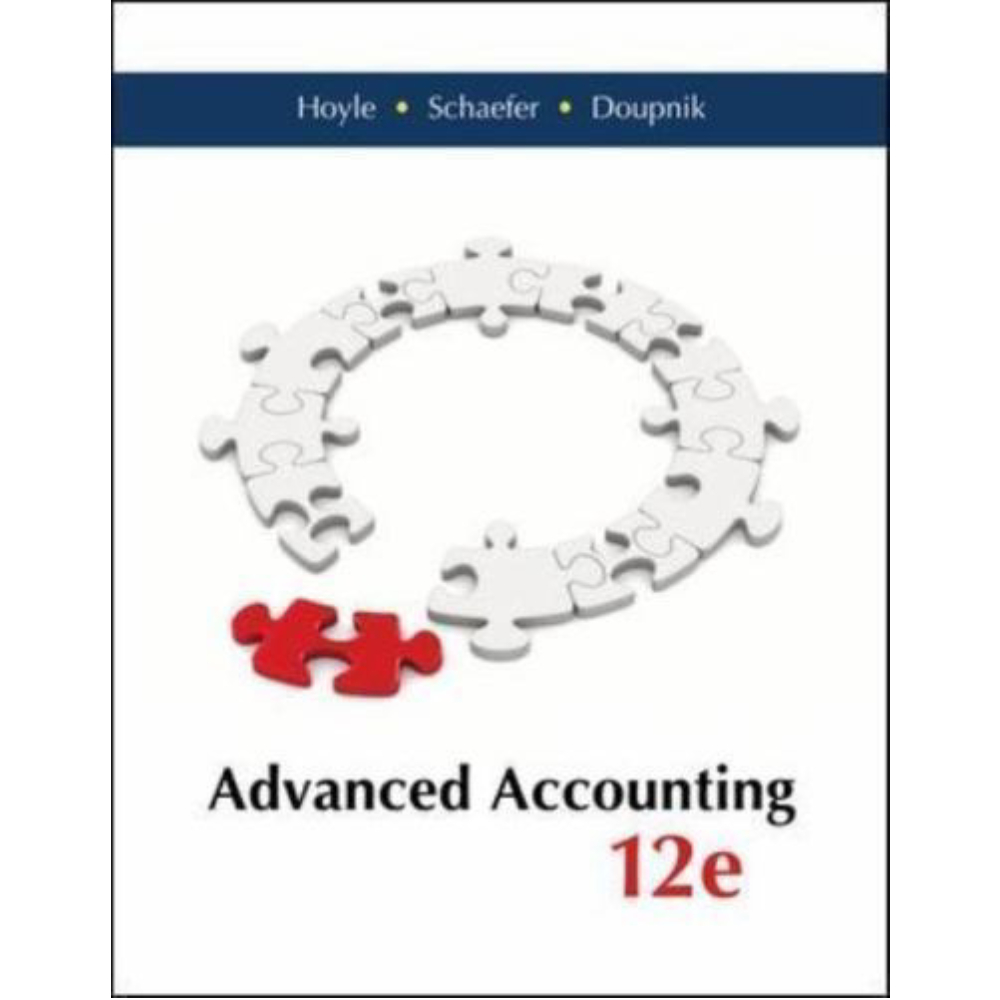
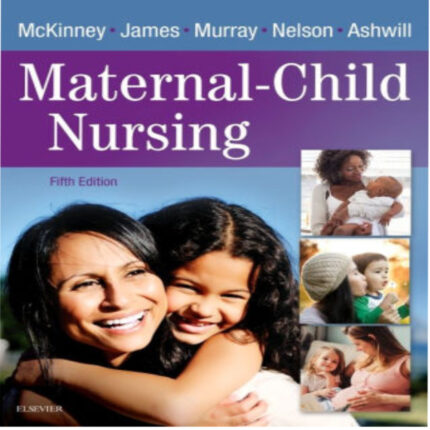


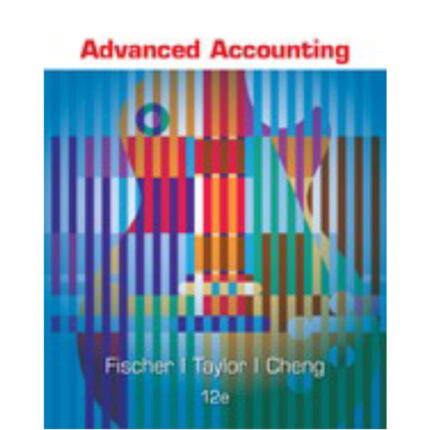


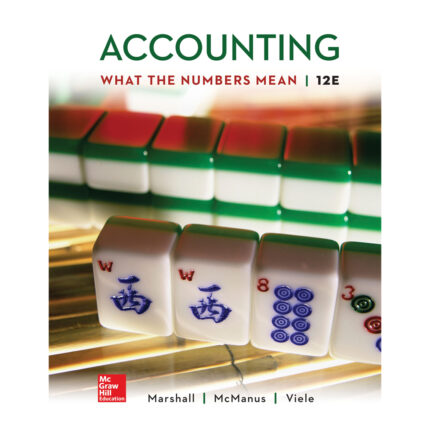


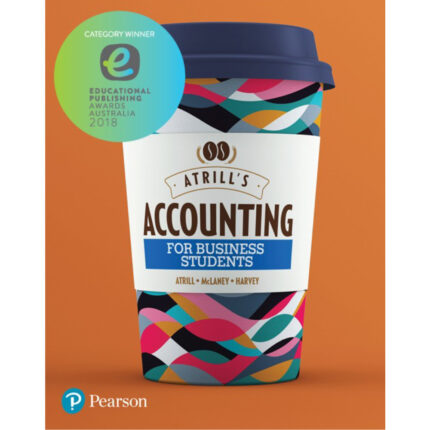
Reviews
There are no reviews yet.